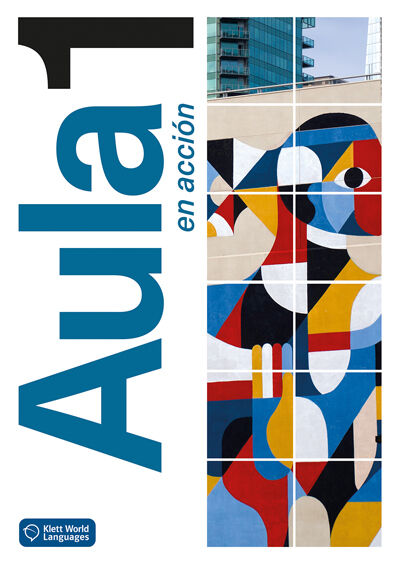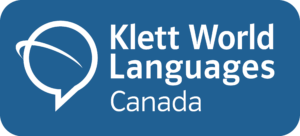Case Study:
Aula en Acción
How Klett World Languages easily and effectively helps students communicate in Spanish


THE CHALLENGE
UIC’s Spanish Basic Language Program is a four semester program from novice-low to intermediate-low levels. One of the three overarching goals of the Program is to have students complete authentic, real-world tasks in the classroom in Spanish.
The majority of Spanish textbooks follow outdated teaching methods when it comes to language acquisition and communicative ability development. Spanish textbooks in the US follow a grammar-based curriculum with the intention to have students learning one grammatical point at a time in a linear sequence, mostly with an emphasis on production. Although they sell themselves as being “communicative” they offer few opportunities for students to use the language to do something with it that is not linguistic.
“I would say this is the scenario of 98% of the textbooks in the US,” Fernández says.
Teachers that want to offer opportunities for language use, look for other materials to supplement their textbooks or greatly modify the activities that the textbook offers. Instead of the text being a tool that helps, as it should be, it ends up being a hindrance. On top of that, textbooks are usually very expensive.

CHOOSING AULA EN ACCIÓN
For instructors who are looking to have a curriculum around communicative goals, are seeking activities that facilitate language acquisition and communicative development, and who want learners to show what they can do in Spanish, Aula en Acción lends itself very well to these endeavors. Since Fernández’s curriculum is based on tasks, she wanted a textbook that could help teach within this framework.
Through a backwards design, Aula en Acción offers purposeful and meaningful activities around the final task, with each chapter including learning opportunities to foster both language and content learning so that students feel confident to do
the unit´s task. It is a task-based program that seeks for students to do something authentic and relevant to their lives using Spanish, which perfectly aligns with Fernández’s teaching philosophy.

THE SOLUTION
After using Aula en Acción, Fernández and her colleagues noticed how much students are able to use Spanish to do real-world tasks. Students apply both linguistic and non-linguistic resources to interpret, interact, and express themselves more effectively. Fernández noticed an increase in students’ engagement and confidence, specifically in speaking, because this program focuses on true communication, not grammar accuracy.
For professors already using KWL resources who wish to extend the opportunities for their students’ language learning, Fernández advises that they get to know the textbook and its resources to determine how to implement them in their programs. Lastly, Fernández suggests identifying areas of the the book that can serve a more traditional program as well but that are still meaningful and purposeful in their objectives


